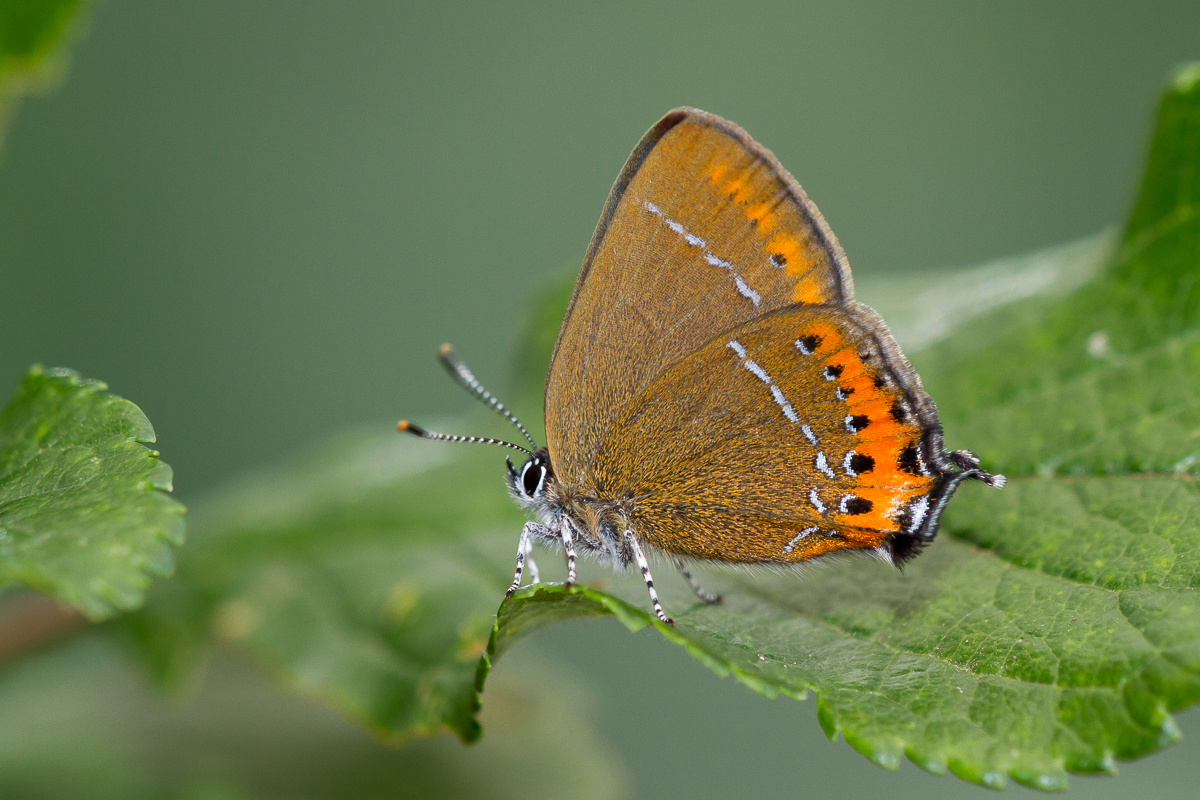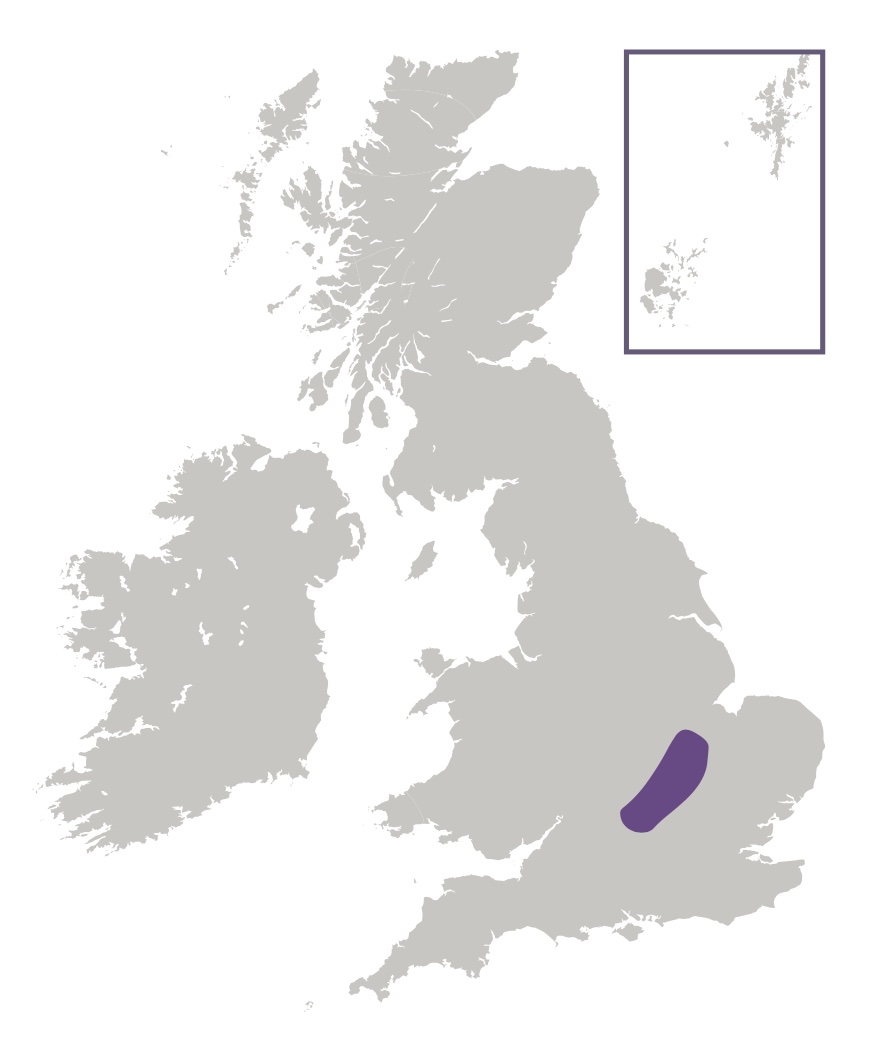
Photo © Peter Eeles
The Black Hairstreak is one of our rarest butterflies and one of the most recently discovered, due to the similarity with its close cousin, the White-letter Hairstreak. This species was first discovered in the British Isles in 1828 when a Mr. Seaman, an entomological dealer, collected specimens from one of the most famous sites for this species - Monk's Wood in Cambridgeshire. These were thought to be specimens of the White-letter Hairstreak until Edward Newman, a Victorian entomologist of note, declared them to be Black Hairstreak.
This butterfly is not a great wanderer and an entire colony will often confine itself to a single area within a wood, despite there being suitable habitat nearby. The inability to colonise new areas at a pace in balance with habitat loss may partially explain the scarcity of this species. This butterfly has a very restricted distribution that follows a line of clays between Oxfordshire in the south-west and Cambridgeshire in the north-east.
The adults spend much of their time resting high up on Maple, Ash or the larval foodplant, Blackthorn, crawling over leaves and twigs, in search of aphid honeydew from which they feed - making it extremely frustrating to get a sighting of this species. However, they will come down to feed on various nectar sources, Privet and Bramble flowers being particular favourites.
When active, the butterflies are extremely difficult to follow in flight - a characteristic of all hairstreaks. To make matters worse, the Black Hairstreak is often found in the company of both White-letter and Purple Hairstreaks and distinguishing these three species in flight is almost impossible. The butterfly always settles with wings closed and regulates its temperature by positioning its wings at an appropriate angle to the sun.
When engaged in courtship, male and female whirl around each other in a tireless dance which lasts for several minutes, ultimately resulting in the pair mating.

Black Hairstreak colonies are typically located in small woods or nearby hedgerows, where Blackthorn, the larval foodplant grows. Wild Plum is also used occasionally. Sites are located in sheltered but sunny positions and typically have a southerly aspect to them.
Adults feed primarily on Honeydew (N/A). brambles (Rubus spp.), Dog-rose (Rosa canina) and Wild Privet (Ligustrum vulgare) are also used.
The primary larval foodplant is Blackthorn (Prunus spinosa). cherries (Prunus spp.) is also used.
